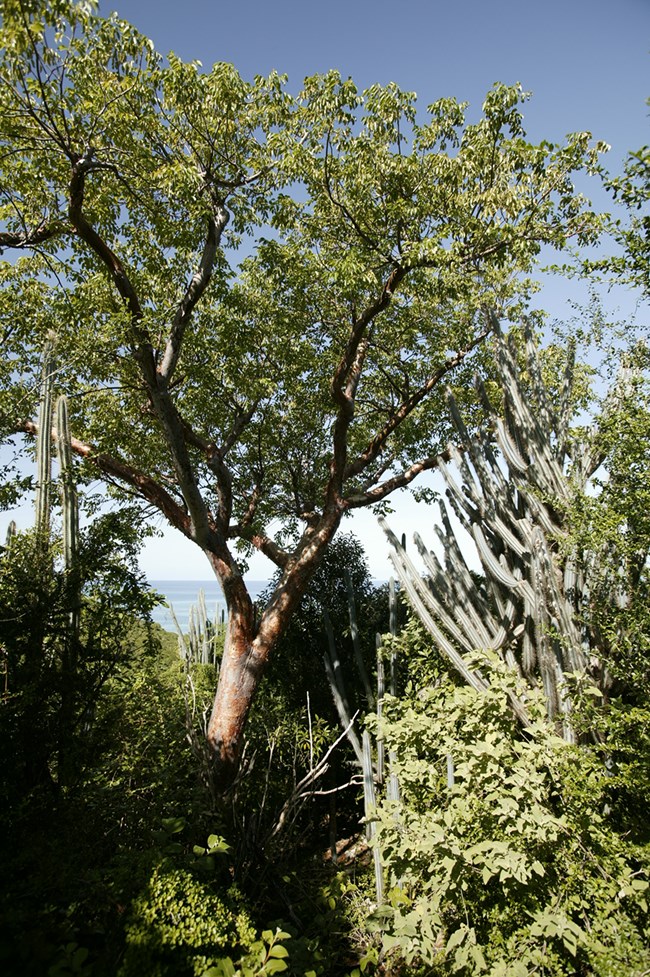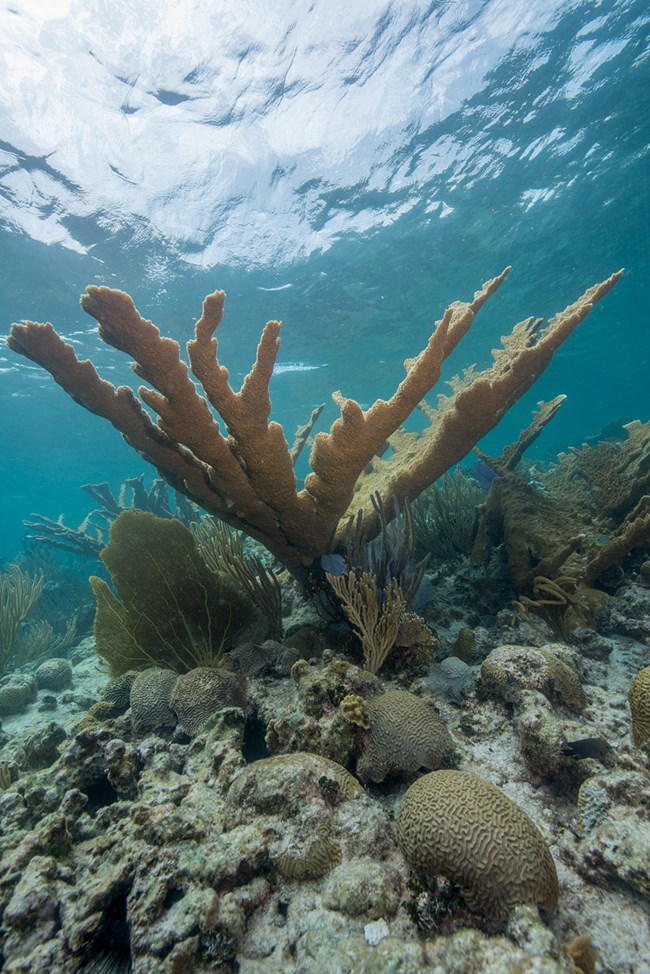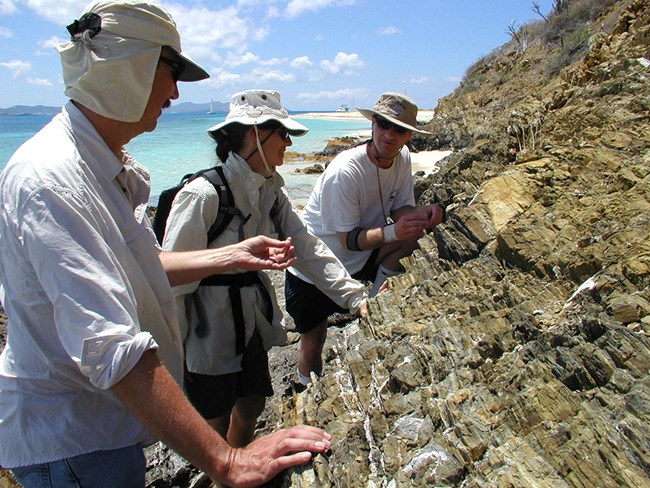
Digital Island (Sean Corsaut) Subtropical Dry ForestSubtropical dry forest covers much of the landmass of St. Croix, but this is a relatively recent development. Prior to the arrival of European colonists, much of the northern (windward) side of the island would have been covered in semi-evergreen rain forest, while the southern (leeward) side, receiving less rainfall, would have likely consisted of subtropical dry deciduous hardwood forests. 
NPS photo (S. Pershern) Coral ReefsBuck Island’s Barrier Reef's underwater scene taxes human perceptions with the abundant variety of shape, patter, color, texture, and movement. It’s barrier reef ranks among the Caribbean’s best. It’s thick branching elkhorn corals push their sheer mass to 30-foot heights. Like fortress walls corals rise off the sea floor and dominate the underwater world. The irregular arc of reef surrounding Buck Island’s northern and eastern shore creates a lagoon between reef and island. Wide and shallow lagoon waters seldom exceed 12-feet deep, and the protecting reef moderates the wave action. In the calmer waters of the lagoon, brain corals grow larger, nearly reaching the surface. Seaward of the barrier reef, elkhorn and star coral patch reefs occur around the island, except to the southwest. Coral Reef Tiny colonial animals called coral polyps build reefs by extracting calcium carbonate from seawater. Coral reefs are home to many animals and plants, forming what has been called the “rainforest of the sea”, the second most complex and biologically diverse ecosystem on Earth. The reefs you see today at Buck Island were formed within the past 7,000 years. Elkhorn coral, Acropora palmata, is the major builder of the barrier reef surrounding the island. Coral polyps live in partnership with algae called zooxanthellae, which provide corals with their vivid colors and some of their food. Coral reefs live in nutrient poor, tropical waters within a narrow temperature range (70 - 85 °F). They grow slowly and are vulnerable to pollution, sedimentation, overfishing, warming of the seas, and boat damage. Within the past few decades, coral diseases and hurricanes have significantly impacted Buck Island’s reef system. Its regrowth is now being closely monitored. 
GeologyBuck |
Last updated: April 24, 2018
